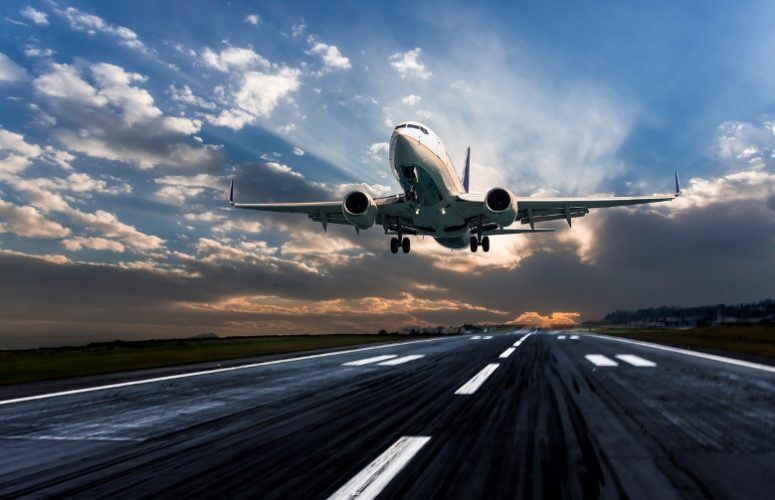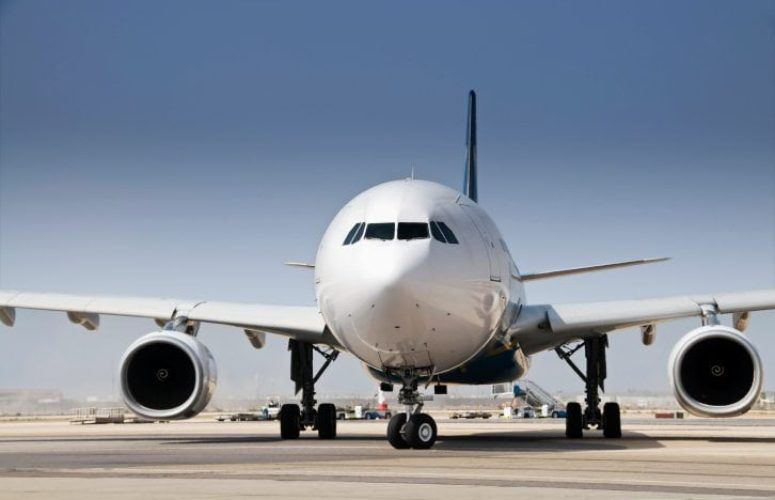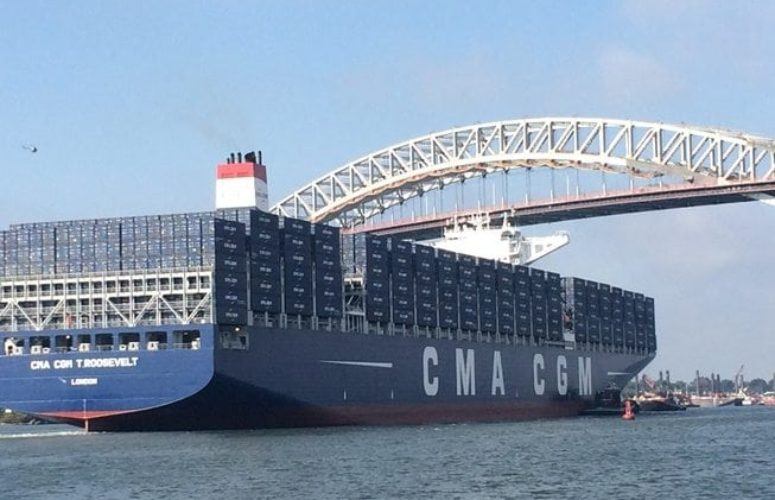
NJ Region’s Airports and Transit Network See Significant Growth in 2018
On Jan 31, 2019The Port Authority of New York and New Jersey announced the release of 2018 volume data across its facilities that show that airports, seaport and the PATH system, the Goethals Bridge and Port Authority Bus Terminal, handled record and near record activity levels in 2018. The numbers further validate the agency’s ongoing $32 billion capital investment program to rebuild and significantly upgrade its aging facilities and provide customers with a 21st century experience.
“Our airports, tunnels, bridges, terminals, PATH and seaport are prime gateways and economic engines in the region, and we must aggressively move forward to ensure that these facilities continue to handle record growth well into the future,” said Port Authority Chairman Kevin O’Toole. “During the next decade, the $32 billion Port Authority capital program will drive improvements to our transportation assets to ensure our facilities provide the top flight experience that our customers demand.”
“We are pleased that our facilities, which were built to handle customer and cargo levels from a bygone era, are able to support the record activity we are seeing today,” said Port Authority Executive Director Rick Cotton. “We are committed to rebuild and invest to assure the agency can meet future growth as well as provide facilities of the quality that the region deserves.”
Airports:
During 2018, the Port Authority handled a projected 137.9 million passengers at its four commercial airports – John F. Kennedy International, Newark Liberty International, LaGuardia and New York Stewart International airports—an increase of 3.8 percent over 2017’s previous record high. Newark Liberty reported a 6.3 percent annual increase, JFK reported a 2.5 percent increase and LaGuardia saw its annual passenger volume rise by 2.3 percent. New York Stewart reported a 44.2 percent surge in traffic, driven in part by new, low-cost nonstop service offered by Norwegian Air to destinations overseas.
To accommodate future airport demand, the Port Authority and its private airport partners have committed an unprecedented $28 billion – the most in agency history – to maintain and build new airport facilities across the system. The level of investment illustrates the Port Authority’s aggressive commitment to creating a network of state-of-the art airport facilities.
At LaGuardia, an $8 billion rebuilding of the legacy airport is in progress, and in December, the first new concourse in Terminal B opened to the public. At Newark Liberty, ground was broken in October for a new Terminal One that will replace the aging and obsolete Terminal A. And at JFK, Governor Cuomo announced in October a $13 billion project to rebuild the airport, including the addition of 4 million square feet to the airport’s north and south sides to increase airport capacity by at least 15 million passengers annually. The first new gates of the redeveloped terminal are scheduled to open in 2023 with projected completion in 2025.
Port of New York and New Jersey:
During 2018, the Port of New York and New Jersey handled more than 7 million TEUs (20-foot equivalent units) for the first time in its history, which dates back to the 1950s. The 7,179,788 TEUs handled allows the port to maintain its position as the busiest on the East Coast and the third busiest in the nation following Los Angeles and Long Beach. The cargo growth was bolstered by an 8.2 percent increase in imported goods including clothing, furniture, electronics and other everyday products over the previous record for imports set in 2017. The Port handled one third of all containers on the East Coast of North America; an increase in market share of 2.8 percent over last year. In addition to cargo containers, the port also set a new all-time record for cargo handled by rail, moving 645,760 containers by rail, up 13.8 percent over the previous record set in 2017.
The growth in part can be attributed to the completion in June 2017 of the Bayonne Bridge Navigational Clearance Project, which raised the clearance under the bridge from 151 feet to 215 feet, allowing the world’s largest container ships to pass under it and serve port terminals in New York and New Jersey. Since the bridge project was completed, the port has seen a dramatic increase in the size of vessels calling on the port, with nearly 30 percent of all containerized cargo at the port now carried on vessels with the capacity to handle 9,000 or more TEUs – the size vessel that could not transit under the old Bayonne Bridge.
To enhance the port’s ability to handle the record cargo growth, the Port Authority this month announced a major new expansion of the rail network serving the Port of New York and New Jersey, allowing the agency to advance its five-year strategic goal to expand rail capacity for cargo destined for outside the region. The expansion will reduce congestion and emissions and get goods to their final destination more efficiently and at lower cost. The new ExpressRail Port Jersey facility culminates a $600 million Port Authority capital investment program dating back to the 1990s that established direct rail access to on-dock and near-dock intermodal rail services at all of its major marine terminals. The opening of the final rail facility will allow the port to advance its strategic five-year goal to handle more than 900,000 rail lifts in 2023, the equivalent of more than 1.5 million fewer truck trips traveling through the local roads.
The port also experienced strong volumes in its auto line of business. Though total volume was down 0.7 percent when compared to 2017, 573,035 finished vehicles moved over port facilities during the year. The auto line of business also contributed more than 500 vessel calls in 2018.
At the passenger ship terminals, more than 856,000 travelers used port facilities in both Brooklyn and at the Cape Liberty Cruise Terminal in Bayonne. Passenger volume was up more than 17 percent when compared to 2017.
The port’s bulk cargoes including commodities such as road salt, scrap metal and edible oils, also realized strong growth of more than 16 percent as compared to 2017 with a total of 3.68 million metric tons handled in 2018.
PATH:
During 2018, PATH handled 81.73 million passengers, the second highest annual ridership on record. The 2018 passenger levels would have been a new record had it not been for the anomaly of 1.2 million NJ Transit ticket holders who were cross honored on PATH during the 2017 summertime track shutdowns to accommodate emergency repairs at New York’s Penn Station.
To help accommodate future growth, PATH’s installation of its new signal system successfully met federal requirements for PTC by the federally mandated deadline of December 2018. The new technology provides automatic emergency braking capabilities on each line to prevent accidents such as train-to-train collisions and derailments caused by excessive speed. It was mandated for all U.S. rail systems after a deadly Amtrak crash in California in 2008.
In addition, PATH opened the new $256 million Harrison Station on the westbound side in October, replacing an old brick station that dated to the early 20th century that was built by the Pennsylvania Railroad, which later became PATH. The new station is handicapped accessible, has better lighting, longer platforms and includes countdown clocks to inform commuters about when the next train will arrive.
PATH also launched several customer amenities in 2018, including the activation of countdown clocks in its stations, and cell service in PATH’s below ground stations.
Tunnels, Bridges and Terminals:
At the Port Authority’s crossings, the Goethals Bridge established a new annual record for passenger traffic in 2018, reporting 16,577,588 eastbound customers, a 4.8 percent increase over the previous record of 15,813,461 vehicles who traveled over the crossing in 2017. Last May, a new Goethals Bridge was completely open to traffic, providing travelers with three, 12-foot lanes in each direction to accommodate future growth and shoulders to improve incident response and ensure reliable travel times.
In addition to the Goethals Bridge, the Port Authority is about to complete a $1.7 billion project to rebuild the Bayonne Bridge, which will not only benefit travelers by providing two, 12-foot travel lanes, a full shoulder, and median barrier to separate northbound and southbound traffic, but also provides a major benefit for the agency’s maritime ports by allowing new modern ships up to 18,000 TEUs to travel under it.
The Port Authority also reached record E-ZPass participation at its crossings in 2018 with nearly 87 percent of all tolls being paid with E-ZPass. As regional adoption of all-electronic cashless tolling continues to grow, E-ZPass participation is a critical element of customer convenience and ease of toll payments.
The Port Authority Bus Terminal also handled a record number of passengers, 260,000 daily, and bus movements, 2.4 million, annually. To deal with what is expected to be continued growth in trans-Hudson bus travel, the agency has embarked on an environmental review for a project to build a new modern bus facility to replace the existing one that was built in the 1950s.
To access more business news, visit NJB News Now.
Related Articles:





